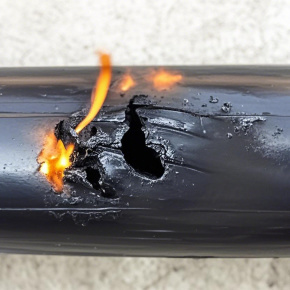
Information
Market competition and prospects of environmentally friendly and low-smoke halogen-free cables
Release time: 2025-02-27
1. Concept Definition: The Essential Difference Between Two Types of Cables
In today's society, environmental protection and safety issues are increasingly valued. As innovators in the cable industry, environmentally friendly cables and low-smoke halogen-free cables are gradually changing the landscape of the traditional cable market.
- Environmentally Friendly Cables:As the name suggests, its core lies in the use of renewable and biodegradable materials, aiming to reduce the negative impact on the environment during production and waste disposal. These cables alleviate the environmental pressure throughout their lifecycle by reducing the emission of harmful substances (such as lead, cadmium, and other heavy metals). They not only comply with global environmental protection regulations, such as the EU'sRoHSdirective, but are also an indispensable part of future green buildings and sustainable energy.
- On the other hand, low-smoke halogen-free cablesfocus on safety in fire situations. They use halogen-free materials, and the smoke density released during combustion is far lower than that of traditional cables, only about1/30of the latter. At the same time, the content of toxic gases (such as hydrogen chloride) is also extremely low, greatly improving the efficiency of escape and rescue during a fire. In enclosed spaces such as high-rise buildings and subways, the flame-retardant properties of low-smoke halogen-free cables have become essential characteristics, reducing smoke and slowing down the spread of flames, thus winning valuable time for personnel evacuation and firefighting.70%Smoke reduction50%, flame spread rate reduction
2. Analysis of Current Market Competition
Environmentally Friendly Cables: Rapid Popularization Driven by Policy
- With the enhancement of global environmental awareness, environmentally friendly cables are rapidly replacing traditional cables. Especially in key cities in China, such as Beijing and Shanghai, environmentally friendly cables have become mandatory standards. Driven by policy, companies are transforming, adopting new materials and processes to meet the requirements for green building certification. For example,Hechang Electricand other manufacturers have effectively reduced carbon emissions through material innovation, such as the application of bio-based sheaths, gaining widespread market recognition.
Low-Smoke Halogen-Free Cables: Safety Demand Leads Market Growth
- The market growth of low-smoke halogen-free cables is mainly due to their high emphasis on safety. In critical areas such as high-rise buildings, subways, and data centers, their flame-retardant performance has become a primary factor. Although the current price is higher than that of traditional cables20%—30%, with the continuous advancement of large-scale production and technological updates, such as the optimization of oxygen-free copper conductors, the cost gap is gradually narrowing. This enhances the competitiveness of low-smoke halogen-free cables in the market.
3. Future Market Trends and Driving Forces
Continuous Strengthening of Policies and Regulations
- In the future, as environmental protection and safety regulations continue to strengthen globally, the market demand for environmentally friendly cables and low-smoke halogen-free cables will continue to grow. China's "Guidelines for the Selection of Electrical Equipment Materials" has clearly prioritized the use of low-smoke halogen-free cables, while over50countries worldwide have also included environmentally friendly cables in building safety regulations. These policy directions will further promote the market popularization of the two types of cables.
Technological Innovation Promotes Cost Reduction
- The research and application of new materials will be an important trend in the future cable industry. For example, the application of nano-level flame retardants allows for a reduction in the thickness of cable sheaths while maintaining the original performance level. This not only improves the cost-effectiveness of cables but also reduces production costs.15%Additionally, intelligent upgrades will also become a major highlight in the cable industry. Some companies have implanted sensors into cables to achieve real-time temperature monitoring and fire warning functions, further enhancing the safety and reliability of cables.10%—20%Market Demand Differentiation and Scenario Expansion
As the market demand for cables continues to differentiate and expand, the application scenarios for environmentally friendly cables and low-smoke halogen-free cables are also becoming increasingly rich. In the construction sector, the proportion of the two types of cables has exceeded
- and is mainly applied in public facilities such as hospitals and schools. In emerging fields, such as new energy vehicle charging piles and offshore wind power, the demand for corrosion-resistant and high transmission efficiency cables is surging. This provides new market opportunities and development space for the two types of cables.60%4. Challenges and Future Outlook
Short-term Obstacles: Technical Barriers and Financial Pressure
Although the market prospects for environmentally friendly cables and low-smoke halogen-free cables are broad, they still face some challenges in the short term. Small and medium-sized enterprises are particularly prominent in terms of technical barriers (such as material formula patents) and financial pressure. This may lead to further industry concentration, with the top five companies' market share expected to reach
- in the year2025.CR5However, this also provides leading companies in the industry with opportunities to integrate resources and expand markets.45%Long-term Opportunities: Continuous Expansion of Market Scale
In the long run, the market prospects for environmentally friendly cables and low-smoke halogen-free cables remain bright. The global market size is expected to grow from
- billion dollars in the year2024to120billion dollars, with a compound annual growth rate of2030to280.15%Among them, the Asia-Pacific region (especially China and India) will contribute over50%of the incremental growth. This is attributed to the rapid economic growth in the region, continuous improvement of infrastructure, and the increasing demand for environmental protection and safety.
As innovative forces in the cable industry, environmentally friendly cables and low-smoke halogen-free cables are gradually changing the landscape of the traditional cable market. They are both the result of technological updates and the convergence point of global sustainable development and safety needs. With the triple push of material science, policy coordination, and market demand, these two types of cables will continue to evolve."Substitutes" have been promoted to the "mainstream choice" in the field of power transmission. In the future, they will continue to lead the development direction of the cable industry, driving energy infrastructure towards a safer, low-carbon, and smarter direction.
 oversea@hichain.com.cn
oversea@hichain.com.cn
 +8617328576881
+8617328576881










